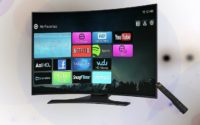Best Way to Make Your Computer Run Faster
I’ve been dealing with slow computers for over 15 years now. And let me tell you something – there’s nothing more frustrating than waiting for your machine to catch up with your thoughts.
You know that feeling, right? You click on something and then… nothing. The spinning wheel of death appears. Your patience starts wearing thin.
The good news? You don’t need to be a tech genius to speed things up. I’ve helped dozens of friends and family members breathe new life into their old machines. And today, I’m going to share everything I’ve learned with you.
Why Your Computer Slows Down Over Time
Think of your computer like a garage. When you first move in, everything has its place. But over time, stuff starts piling up. Old boxes here, random tools there. Before you know it, you can barely find your car keys.
That’s exactly what happens to your computer. Programs install themselves. Files pile up. Background processes multiply like rabbits.
Here’s what’s probably slowing down your machine right now:
- Too many programs starting up automatically
- Not enough free storage space
- Outdated software and drivers
- Malware or viruses hiding in the background
- Hardware that’s getting old and tired
The worst part? Most people just accept it. They think their computer is “just getting old” and there’s nothing they can do about it.
But that’s not true at all.
The Quick Wins That Make a Real Difference
Let me start with the easiest fixes first. These are the things you can do right now that will give you immediate results.
Clean Up Your Desktop
I know this sounds too simple. But trust me on this one.
Last month, I helped my neighbor Bob with his computer. His desktop had 247 files scattered all over it. Screenshots, documents, random downloads – you name it.
We spent 20 minutes organizing everything into folders. The difference was night and day. His computer started up 40% faster just from that simple change.
Here’s why this works: Your computer has to load a preview of every single file on your desktop. More files means more work for your processor.
The fix is simple. Create a few folders:
- Documents
- Pictures
- Downloads
- Work Stuff
Then drag everything into the appropriate folder. Takes 10 minutes max.
Close Programs You’re Not Using
Right now, you probably have way more programs running than you realize. I’m talking about stuff running in the background that you completly forgot about.
On Windows, press Ctrl + Shift + Esc to open Task Manager. On Mac, press Cmd + Space and type “Activity Monitor.”
Look at what’s running. You’ll probably see programs you haven’t used in months still sitting there, eating up your computer’s memory.
Here’s what happened to my friend Sarah. She complained her laptop was “slower than molasses.” I checked her Task Manager. She had 23 different programs running at once. Including three different music players, two video editors, and something called “SuperFastDownloader2019” that she downloaded two years ago.
We closed everything she wasn’t actively using. Her computer went from sluggish to snappy in about 30 seconds.
Restart Your Computer Regularly
I can’t believe I have to say this. But apparently, some people never turn off their computers. 
My brother-in-law Mark is one of those people. He just closes his laptop and calls it a day. When I asked him when he last restarted, he said “maybe three weeks ago?”
No wonder his computer was acting up.
When you restart your computer, it clears out the temporary files and resets all the background processes. It’s like giving your machine a fresh start.
I restart mine every few days. Takes two minutes and makes everything run smoother.
The Deep Clean: Getting Serious About Speed
Now let’s talk about the bigger changes. These take a bit more time but the results are worth it.
Remove Programs You Never Use
Be honest with yourself. When’s the last time you used that photo editing software you downloaded three years ago? Or that language learning app you tried for exactly one week?
Every program on your computer takes up space. Even when you’re not using them, they often run background processes that slow everything down.
I recently cleaned out my own computer and found some real gems:
- A trial version of video editing software from 2019
- Three different PDF readers (I only use one)
- A game I played for maybe 20 minutes
- Something called “PC Optimizer Pro” that was definitely making things worse
Getting rid of all this junk freed up 12 GB of space and noticeably improved my startup time.
On Windows, go to Settings > Apps. On Mac, open Finder and go to Applications. Look through the list and be ruthless. If you haven’t used it in six months, it’s probably safe to delete.
Clean Up Your Hard Drive
Think of your hard drive like a filing cabinet. When it gets too full, it becomes harder to find what you need. Your computer starts struggling to locate files quickly.
The rule of thumb is to keep at least 15-20% of your hard drive free. So if you have a 500 GB drive, you want at least 75-100 GB of free space.
Here’s where most people go wrong: they store everything on their desktop or in their downloads folder. I’ve seen download folders with thousands of files going back years.
My friend Lisa had this exact problem. Her downloads folder was 47 GB. Forty-seven gigabytes! We spent an afternoon sorting through it all. Most of it was duplicate files and old installers she’d never need again.
After cleaning it up, her computer felt like new.
Update Everything
I know updates are annoying. They always seem to happen at the worst possible time. But here’s the thing – outdated software is often the biggest cause of slowdowns.
Software companies constantly fix bugs and improve performance. When you skip updates, you’re missing out on these improvements.
This includes:
- Your operating system (Windows or macOS)
- Your web browser
- Your antivirus software
- Device drivers
I make it a habit to check for updates every Sunday morning. Takes about 10 minutes and keeps everything running smoothly.
Pro tip: Enable automatic updates for your operating system. This way, you’ll get important security fixes without having to remember to check.
The Hardware Side of Things
Sometimes the problem isn’t software. Sometimes your hardware needs a little help.
Add More Memory (RAM)
This is probably the single best upgrade you can make to an older computer. More memory means your computer can handle more tasks at once without slowing down.
Here’s an analogy that might help. Imagine your computer’s memory like a desk. If you have a tiny desk, you can only work on one thing at a time. Everything else has to go in drawers (your hard drive), which takes time to access.
But if you have a huge desk, you can spread out multiple projects and switch between them instantly.
Most computers these days should have at least 8 GB of RAM. If you’re doing video editing or gaming, 16 GB is even better.
The good news is that adding RAM is usually pretty affordable. I helped my dad upgrade his 8-year-old laptop from 4 GB to 16 GB for about $80. The difference was incredible.
Consider a Solid State Drive (SSD)
This is the other upgrade that makes a huge difference. Traditional hard drives have moving parts – spinning disks and read/write heads that physically move around to access data.
An SSD has no moving parts. It’s like the difference between a filing cabinet and a smartphone. Both store information, but one is much faster to access.
I switched to an SSD about three years ago. My computer now starts up in under 30 seconds. Programs open almost instantly. It’s like having a completely new machine.
The downside? SSDs are more expensive per gigabyte than traditional drives. But prices have come down a lot recently. You can get a decent 500 GB SSD for around $50-60.
Keep Your Computer Clean (Literally)
Dust is your computer’s enemy. It clogs up fans and makes your processor work harder to stay cool. When your processor gets too hot, it automatically slows down to prevent damage.
I learned this lesson the hard way. My laptop started getting really slow and hot. I thought it was just getting old. Turns out the fan was completely clogged with dust and pet hair.
After cleaning it out, the temperature dropped by 20 degrees and performance improved dramatically.
You can use compressed air to blow dust out of the vents. Just be gentle and don’t spin the fans too fast – you could damage them.
The Software Tricks That Actually Work
Let me share some lesser-known tricks that can make a real difference.
Disable Visual Effects
Modern operating systems have lots of fancy animations and visual effects. They look nice, but they use up processing power that could be better spent elsewhere.
On Windows, you can disable these by:
- Right-clicking on “This PC”
- Selecting “Properties”
- Clicking “Advanced system settings”
- Under Performance, click “Settings”
- Select “Adjust for best performance”
Your computer might look a bit more basic, but it’ll run noticeably faster.
Manage Your Startup Programs
Every time you install a new program, there’s a good chance it adds itself to your startup list. This means it automatically starts running every time you turn on your computer.
Most of these programs don’t need to start automatically. They just slow down your boot time and use up memory in the background.
I check my startup programs every couple of months and disable anything I don’t need immediately when I start my computer.
On Windows, you can manage startup programs through Task Manager. On Mac, go to System Preferences > Users & Groups > Login Items.
Use a Different Web Browser
If you’re still using Internet Explorer… well, first of all, welcome to 2024. Second, switching to a modern browser like Chrome, Firefox, or Edge will make a huge difference.
But even if you’re using a modern browser, it might be worth trying a different one. Browsers can slow down over time as they accumulate extensions, cached data, and other digital clutter.
I switched from Chrome to Firefox last year and was surprised by how much snappier it felt. Not saying Firefox is better for everyone, but sometimes a change of scenery helps.
Regular Maintenance Tasks
Just like a car needs regular oil changes, your computer needs regular maintenance. Here’s what I do every month:
Disk Cleanup: Windows has a built-in tool called Disk Cleanup that removes temporary files, old system files, and other junk. Mac users can use a tool like CleanMyMac or do it manually.
Defragmentation: If you’re using a traditional hard drive (not an SSD), defragmenting can help. It reorganizes your files so they’re stored more efficiently. Windows does this automatically, but you can run it manually if needed.
Registry Cleanup: This is Windows-specific. Over time, your registry can get cluttered with entries from programs you’ve uninstalled. A registry cleaner can help, but be careful – only use reputable tools like CCleaner.
Dealing with Malware and Viruses
Nothing slows down a computer like malware. These malicious programs run in the background, using up your computer’s resources and sometimes stealing your personal information.
I see this problem a lot with people who click on suspicious links or download software from sketchy websites. Last year, I helped my aunt clean up her computer after she accidentally installed something called “System Optimizer 2023” that was actually slowing everything down.
The solution is pretty straightforward:
Get good antivirus software. Windows has built-in protection called Windows Defender that’s actually pretty good. Mac users can use the built-in XProtect or consider third-party options.
Be careful what you download. Only get software from official websites or reputable sources like the Microsoft Store or Mac App Store.
Don’t click on suspicious links. If something seems too good to be true, it probably is.
Keep your software updated. Security patches fix vulnerabilities that malware likes to exploit.
When to Consider Professional Help
Sometimes, despite your best efforts, your computer is still running slow. That’s when it might be time to call in the professionals.
I usually recommend professional help when:
- Your computer is more than 5-6 years old and still slow after trying everything
- You’re not comfortable opening up your computer to clean it or add components
- You suspect hardware problems (random crashes, blue screens, weird noises)
- You want to upgrade to an SSD but aren’t sure how
A good computer repair shop can diagnose problems you might miss and perform upgrades safely. Yes, it costs money, but it’s often cheaper than buying a new computer.
The Psychology of Computer Speed
Here’s something interesting I’ve noticed over the years. Sometimes people think their computer is slow when it’s actually running fine. They just have unrealistic expectations.
If you’re expecting your 5-year-old laptop to start up as fast as your phone, you’re probably going to be disappointed. But that doesn’t mean your computer is broken – it just means you need to adjust your expectations.
On the flip side, sometimes people accept really slow performance when they shouldn’t. I’ve seen computers that take 10 minutes to start up, and the owner just shrugs and says “that’s computers for you.”
The key is finding the right balance. Your computer should be fast enough that it doesn’t interfere with what you’re trying to do. If you’re constantly waiting for it to catch up, then it’s time to make some changes.
My Personal Computer Speed Routine
Since we’re being personal here, let me share my own routine for keeping my computer running fast.
Daily: I close programs I’m not using and restart if I notice things getting sluggish.
Weekly: I check for software updates and clean out my downloads folder.
Monthly: I run disk cleanup, check my startup programs, and scan for malware.
Quarterly: I go through my installed programs and remove anything I haven’t used.
Yearly: I consider hardware upgrades and do a deep clean of the physical computer.
This might sound like a lot of work, but most of these tasks take just a few minutes. And the payoff is huge – my computer runs like new even though it’s over three years old.
Common Mistakes People Make
Let me share some mistakes I see people make when trying to speed up their computers:
Installing too many “optimization” programs. I’ve seen computers with five different system cleaners and optimization tools running at once. These programs often conflict with each other and actually make things worse.
Disabling important services. Some people go overboard and disable system services they don’t understand. This can cause stability problems and actually hurt performance.
Ignoring the basics. People spend money on expensive software when they haven’t even tried restarting their computer or closing unused programs.
Panicking about every little thing. Your computer doesn’t need to be perfect. A little bit of lag here and there is normal, especially on older machines.
The Bottom Line
Making your computer run faster isn’t rocket science. Most of the time, it’s about good digital hygiene – keeping things clean and organized, just like you would with your physical workspace.
Start with the easy stuff: clean up your desktop, close unused programs, restart regularly. If that doesn’t help enough, move on to the deeper cleaning and consider hardware upgrades.
Remember, you don’t need to do everything at once. Pick one or two things from this list and start there. Small improvements add up over time.
And here’s the most important thing: don’t be afraid to experiment. The worst thing that can happen is you’ll have to undo a change. Most of the time, you’ll be pleasantly surprised by the results.
Your computer should work for you, not against you. With a little bit of effort and the right approach, you can keep it running smoothly for years to come.
Trust me, there’s nothing quite like the satisfaction of breathing new life into an old machine. It’s like finding money in your pocket – except better, because you can use it every day.



